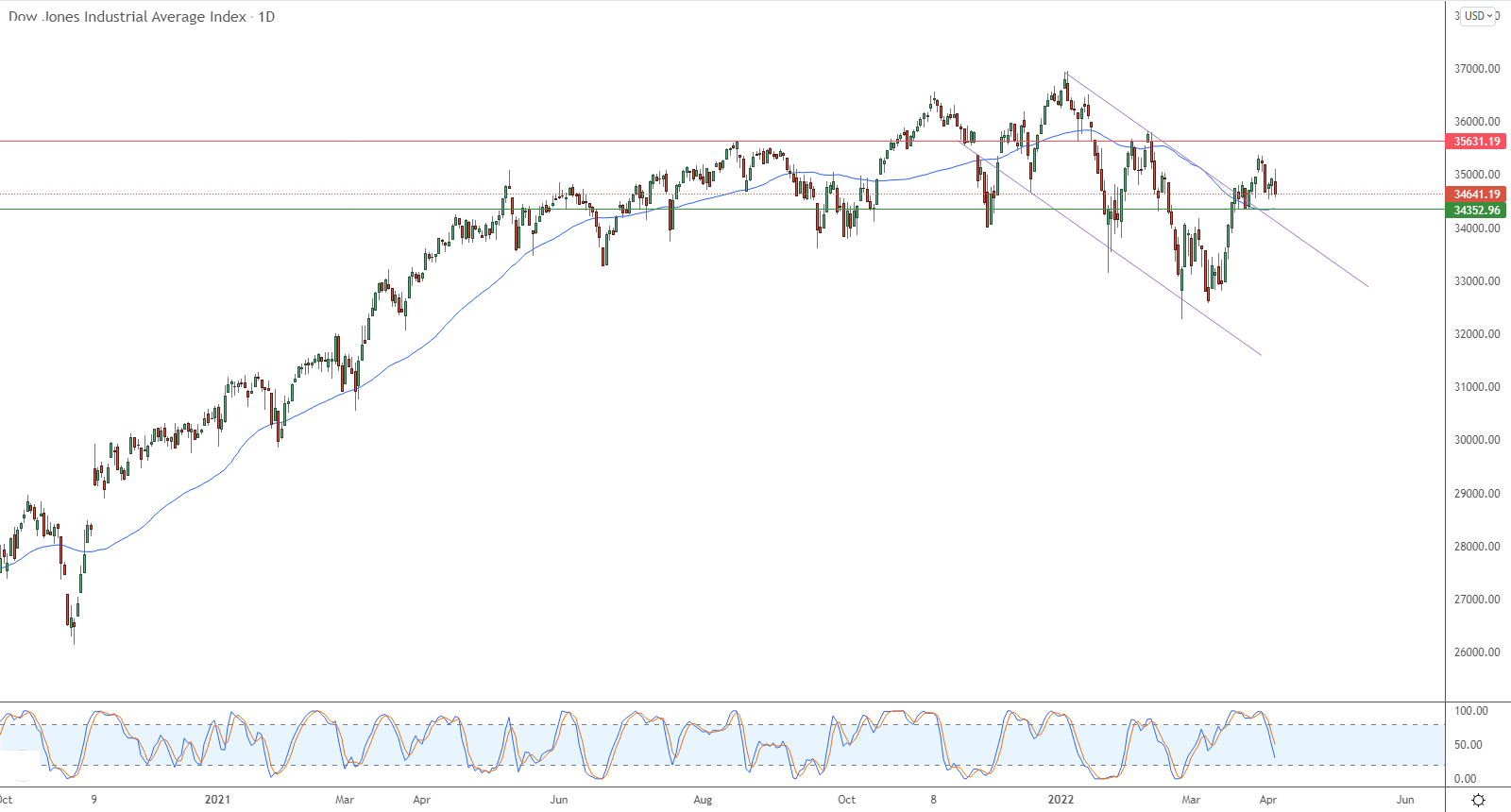The Dow Jones Industrial Average returned to decline during its recent trading at the intraday levels, to record losses in its last sessions, by -0.80%. It lost the index towards -280.70 points, after rising at the beginning of its early trading, recording its highest level during the session at 35,112.21. It then rebounded from a decline, turning those early profits into losses at the end of trading, and then settled at the close at the level of 34,641.19, the index started to rise in Monday's trading by 0.30%.
22 of the 30 components of the index declined, and the shares that fell the most, by percentage, were Boeing Co. by -4.46% and Salesforce Inc. by -3.98%, followed by Intel Corp. By -2.17%.
A Wall Street economist warned that Tuesday's sharp talk about the Federal Reserve's balance sheet from a major policy maker could signal a severe skate for equity investors.
Central Bank Governor Lyle Brainard, who was chosen by President Joe Biden to be the Fed's second-in-command, said at a regional Fed-sponsored conference in Minneapolis that the Fed "will continue to systematically tighten monetary policy through a series of interest rate increases and begin lowering the balance sheet is at a fast pace once we meet next May." He also added that inflation was "very high" with risks that it could rise further.
Meanwhile, February's foreign trade deficit narrowed 0.1% to $89.2 billion after its highest level ever in January. Economists polled by the Wall Street Journal expected a trade deficit of $88.5 billion.
The Institute for Supply Management said its index of business conditions at service-oriented firms rose 1.8 points in March to 58.3%, rebounding from the slowdown caused by Omicron and in line with expectations. Reads over 50% are considered positive, and those over 55% are considered exceptional.
Technically, the index’s decline came because of the influx of negative signals in the relative strength indicators, after they reached earlier in the areas of severe overbought operations. The index tries to drain this overbought to gather its positive forces that may help it recover and rise again, in light of the control of the main bullish trend in the long run. The average was affected by leaving the range of a bearish corrective price channel that limited its previous trading in the short term, as shown in the attached chart for a (daily) period. There is also the continuation of the positive support for its trading above its simple moving average for the previous 60 days.
We expect the index to return to the upside during its upcoming trading, as long as support remains at 34,353, to target the first resistance levels at 35,631.

